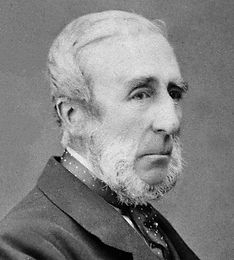
Newport's Reviewers
Newport's reviewers aided his experimental work and also impeded his ideas from publication. Here's some information about them.*
William Saunders was an underwriter at Lloyds who was proficient in botany and entomology. He amassed extensive natural history collections over his lifetime. Saunders reviewed Newport's first memoir on the oil beetle (1845). He disproved of Newport's idea that light instigates instincts in animals and Newport omitted this section for publication. This omission spurred Newport's crusade that he was the first Englishman to propose that inorganic forces converted to organic forces in the animal body. The legacy of the oil beetle paper directly played out in Newport's concept of sperm-force and in the continued reviewer resistance to his conjectures about the conversion of forces.
William Sharpey was a physiologist and influential teacher. He reviewed two of George Newport's papers on fertilization. While he participated in Newport's experiments as a witness and consultant, he was an antivitalist and disapproved of Newport's concept of sperm-force.
Allen Thompson was an embryologist and favourably reviewed Newport's first frog fertilization paper. Thomson also mentored the fertilization research of Newport's rival, Henry Nelson. Thomson and Sharpey were friends and shared an empiricist's cautious approach to forming scientific conclusions.
George Busk was a surgeon and zoologist. He helped with Newport's fertilization experiments and suggested that Newport expose frog sperm to choloroform gas to test if their motionless bodies could fertilize the frog egg. However, Busk was lukewarm about Newport's second fertilization paper and disapproved of Newport's proposal of sperm-force




